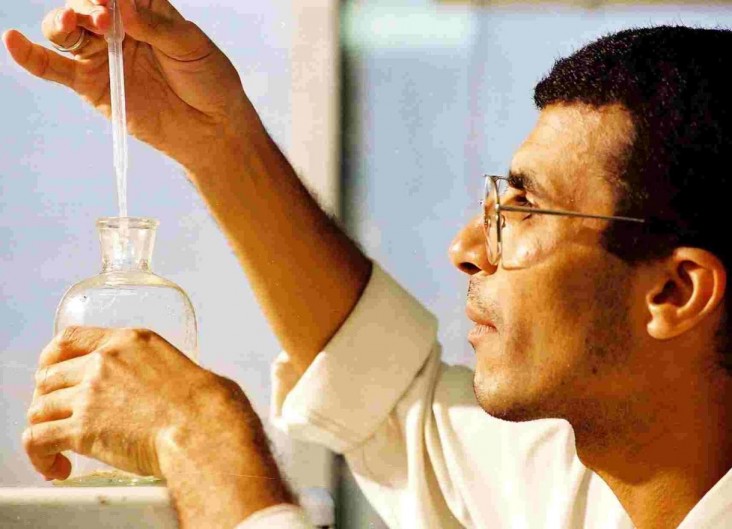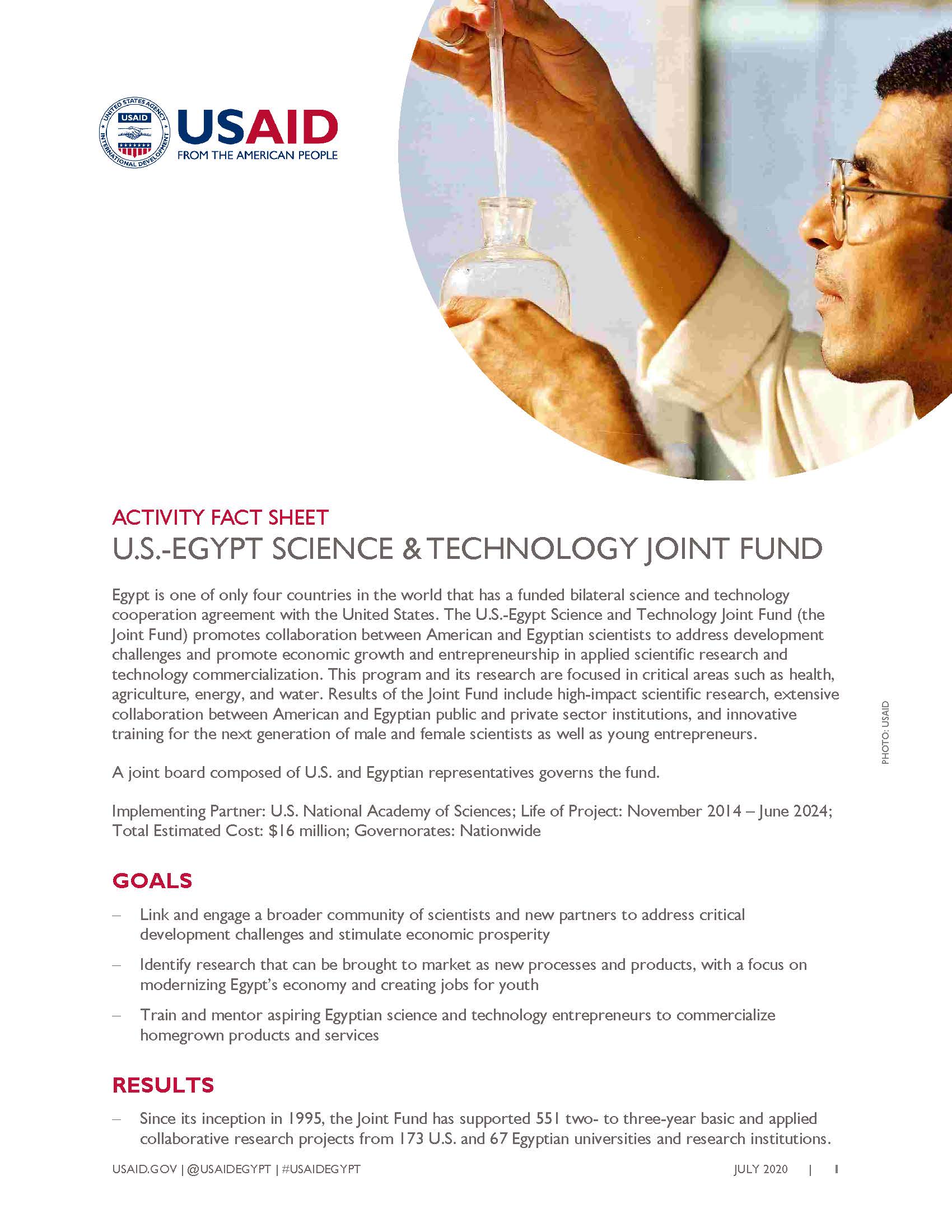Speeches Shim

Egypt is one of only four countries in the world that has a funded bilateral science and technology cooperation agreement with the United States. The U.S.-Egypt Science and Technology Joint Fund (the Joint Fund) promotes collaboration between American and Egyptian scientists to address development challenges and promote economic growth and entrepreneurship in applied scientific research and technology commercialization. This program and its research are focused in critical areas such as health, agriculture, energy, and water. Results of the Joint Fund include high-impact scientific research, extensive collaboration between American and Egyptian public and private sector institutions, and innovative training for the next generation of male and female scientists as well as young entrepreneurs. A joint board composed of U.S. and Egyptian representatives governs the fund.
Implementing Partner: U.S. National Academy of Sciences; Life of Project: November 2014 – June 2024; Total Estimated Cost: $16 million; Governorates: Nationwide
GOALS
- Link and engage a broader community of scientists and new partners to address critical development challenges and stimulate economic prosperity
- Identify research that can be brought to market as new processes and products, with a focus on modernizing Egypt’s economy and creating jobs for youth
- Train and mentor aspiring Egyptian science and technology entrepreneurs to commercialize homegrown products and services
RESULTS
- Since its inception in 1995, the Joint Fund has supported 551 two- to three-year basic and applied collaborative research projects from 173 U.S. and 67 Egyptian universities and research institutions.
- More than 564 research papers and 13 patents were published as part of the Fund’s collaborative effort to generate solutions to global development challenges.
- In 2018, the Board approved 15 collaborative research grants totaling $5 million in areas critical to both Egypt and the U.S. including: (1) new tools for diagnosing tick-transmitted diseases; (2) the development of a new avian influenza vaccine that led to the control of avian influenza in Egypt; (3) the creation of textiles containing antimicrobial and insect repellent; (4) new methods for processing rice straw using steam explosion technology; and (5) building composite materials for the automotive and airline industries.
- During the 2019 application cycle, 14 joint research grants totaling $4.5 million were awarded. Projects will investigate topics in the fields of smart agriculture, energy storage, infectious disease, desalination technology, as well as wastewater management and reuse.



Comment
Make a general inquiry or suggest an improvement.